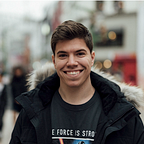5 Unexplored Partnership Opportunities for Esports Teams
In 2019, Nike inked a multimillion-dollar sponsorship deal with T1, the storied League of Legends pro team from Korea. As part of the deal, they gave Faker, T1’s midlaner and the most universally acclaimed esports player in history, a tour of Nike headquarters.
As he wandered through the tour, starry eyed and decidedly out of place, it signified something larger than two massive corporations coming to an agreement. It symbolized the explosive growth of esports as a whole, from the old school LAN Counterstrike 1.6 tournaments that packed cafeterias and library community rooms to what it is today: an absolute monolith of online and realspace entertainment.
McDonald’s followed this commitment a few months later with keystone deals of their own. Already sponsors of the Olympics, ironically enough, they signed sponsorship deals with Blizzard Entertainment and Riot Games Korea, stamping their logo on the Overwatch League and the LCK, Korea’s premier League of Legends esports organization. Other sponsorship deals have followed, with requisite branding and messaging in games and tournaments. For Riot, they picked up State Farm, Red Bull, Alienware and Mastercard as flagship brands among others, while Blizzard inked deals with Coca-Cola, Toyota, T-Mobile, HP, and Intel.
However, despite the wide ranging outreach of game company sponsorship workers, there is still a charcuterie board of industries and companies that would both find audiences and new customers in esports sponsorships.
5. Watches. Companies like Montblanc, Omega, Tissot, Breitling, or Hublot might seem like a strange sponsorship, think about the possibilities. Watches and watch brands have found themselves floundering in the era of personal devices, with market share chipped yet smaller by smart watches. Esports caters to viewers directly in the 18–35 category that are finding themselves increasingly availed of expendable income. Putting matching luxury watches on a team of players for after-game interviews, general travel, and media appearances would have players asking “what watch is he wearing,” and subsequently, “where can I get one?” For those unconvinced if esports viewers have the income to buy luxury goods, consider Louis Vuitton’s recent partnership with Riot Games.
4. Luxury Streetwear. Streetwear is already wildly popular in the 18–35 age bracket, but a popular brand bringing out a line of team specific clothing could drive business, and repeat customers, to brands new to the esports scene. Brands that could stand the influence would be mainstays like Dior, Stone Island, Moncler, Fendi, Versace, and Hermès. Partnership deals could include signature lines, designer jerseys, or interview and appearance outfits.
3. Cologne. While esports are a visual sport, having a high-profile cologne brand such as Tom Ford, Jo Malone, or Helmut Lang could drive younger audiences toward luxury scents. Esports have been famously stinky, but a team of players that smell so good interviewers gush about it would be a welcome change. Fans that meet players would be able to smell the difference as well. Would it lead to higher sales? Selling smells is always going to be more difficult in mass media, which is why cologne advertisements tend to be highly impressionistic pieces of abstract cinema, but a cologne sponsorship for the more dapper players in any pro league wouldn’t be out of place. Invictus by Paco Rabanne already sponsored a French CS:GO team, meaning the precedent is already here.
2. Outerwear. League of Legends holds their world championship every year in October or November, meaning teams are often found wearing layers of outerwear as they travel to championship venues in China, Korea, Europe, or the United States. Outerwear brands could do well to court esports fans with high profile sponsorships. Brands like Canada Goose, The North Face, Patagonia, or Columbia might be interested in attracting and dominating a younger market, as well as changing public perception of their companies. Patagonia feels Oregonian, Canada Goose feels Arctic, and Columbia rings of fintech startup employees wearing fleece vests over plaid in an open concept office. Altering these perceptions could prove beneficial in widening market share or softening a sharp image.
1. Coffee. Esports fans are esports players, and players tend to stay up late at night. While esports market has been traditionally dominated by energy drinks (G-Fuel, the syrupy, likely toxic concoction taking over YouTube videos everywhere comes to mind) Coffee has traditionally been seen as a marginally healthier, more mature way of putting caffeine in the bloodstream. Sponsorships from either coffee companies (Starbucks, Dunkin’, Brioche Doree) or home coffee or espresso makers (Nespresso, Breville, Keurig) would be easy to shoehorn into pictures, YouTube videos, documentaries and social media posts, and would likely find an audience among esports viewers.
In the future, esports organizations should focus on expanding their base of partnerships and sponsorships. Esports is a brand-new industry, with a great deal of unexplored territory to cover in the business world. As the industry continues to grow year-over-year, being the first to develop an organizational relationship with an established brand would speak volumes both to the ambition of an esports organization, as well as the practicality and youthfulness of the larger brand.
